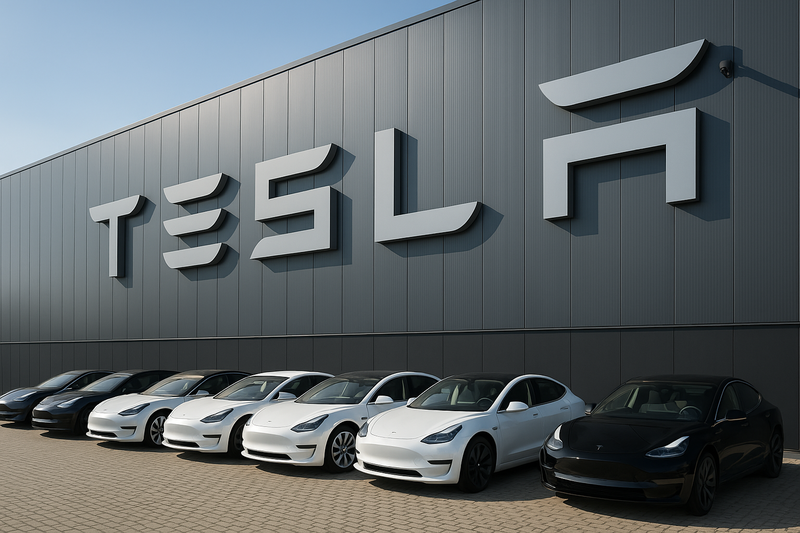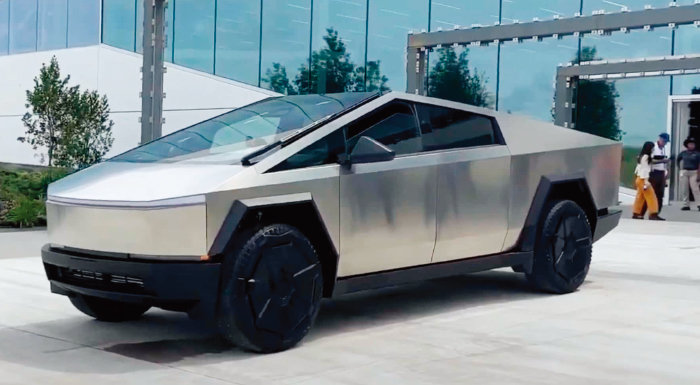Musk’s Mega Payday: A Reward or a Risk in a Shifting EV Landscape?
Input
Modified
He asked for the sky, and they handed him stars, But galaxies dim when built on old cars. A prize wrapped in stocks, not cash in hand, Now he must prove his empire can stand.
After a prolonged legal battle and months of investor debate, Tesla’s board has reinstated Elon Musk’s controversial USD 50 billion pay package. Once the crown jewel of Silicon Valley compensation, the award returns in full, despite a challenging year for both the company and its charismatic CEO. Musk now has the green light to claim potentially the most significant executive payday in corporate history. But the real question is no longer whether he gets to keep the package. The real question is whether he will ever actually earn it.
This compensation is almost entirely stock-based. Its value depends on ambitious performance targets, both financial and market-based, that seem increasingly difficult to reach. Tesla’s position in the electric vehicle (EV) market remains strong in the United States, but its global footprint, particularly in China, is under threat. At the same time, broader concerns are rising over the direction of the EV industry itself, which no longer commands the same growth narrative it did a few years ago. As a result, Musk’s stock award may look more like a symbolic gesture than a guaranteed windfall.

A Generous Package, A Shrinking Industry
The board’s decision to reinstate Musk’s 2018 pay package comes despite declining financial performance and a rapidly cooling EV sector. The original agreement outlined a bold vision: Musk would earn nothing unless Tesla met a series of milestones, including a market capitalization of USD 650 billion and significant increases in revenue and adjusted earnings. At the time, the targets seemed nearly impossible to achieve. Musk met many of them. Yet the value of that success has eroded since.
Tesla’s stock has dropped significantly over the past year. At its peak in 2021, Tesla’s market capitalization was above USD 1 trillion. Today, it hovers far below that level. Musk himself has lost more than USD 80 billion in paper wealth since last year, though he remains among the world’s wealthiest individuals. The reasons for the decline are complex, but they stem from broader headwinds in the EV market and specific challenges within Tesla’s business strategy.
For one, EV adoption has hit a plateau in several key regions. Supply chains have stabilized, and legacy automakers are catching up with credible electric models. At the same time, high interest rates and waning government incentives are making EVs less attractive to new buyers. The industry, once considered the future of transportation, is entering a phase of maturity and in some respects, stagnation.
Tesla, with its high valuation and aggressive expansion plans, is particularly vulnerable to this shift. Investors are no longer satisfied with promises of distant growth. They want consistent profitability and genuine innovation. Musk’s ability to deliver on those expectations will determine whether his massive stock option payout remains theoretical or becomes real.
China No Longer Tesla’s Playground
Of all Tesla’s international markets, China has become the most difficult. Once its fastest-growing region, the Chinese market has now become a battlefield. Domestic EV makers such as BYD and Nio are not only catching up in terms of product quality, but they are also aggressively cutting prices to gain market share. July sales figures showed Tesla’s China deliveries dropped by 8.4 percent year-over-year, marking one of the steepest declines since the company entered the market.
Competition in China has intensified to the point of a price war. Tesla has had to reduce prices several times in an attempt to stay competitive, squeezing its margins and affecting global profitability. Meanwhile, Chinese regulatory hurdles and growing geopolitical tensions between the U.S. and China are compounding the challenge. In this environment, relying on China to meet revenue and profit goals tied to Musk’s stock package becomes increasingly uncertain.
Tesla’s global brand may still resonate, but that brand is no longer the untouchable symbol of innovation it once was. Consumers in China now have more choices, many of them cheaper and tailored to local preferences. While Tesla continues to open new factories and invest in production, it is doing so in a landscape that no longer favors it. With the world's second-largest economy becoming increasingly nationalistic in its consumer preferences, Tesla’s future in China is more uncertain than ever.
These developments matter not only for Tesla’s global strategy but also for the metrics that determine Musk’s stock compensation. Without strong international growth, especially in a high-volume market like China, meeting those lofty targets becomes far less likely.

The Myth of Infinite Growth Meets Market Reality
Back in 2018, when Musk’s compensation plan was first proposed, Tesla symbolized the boundless promise of disruption. The plan itself was a wager on infinite growth, on the idea that Tesla would not only dominate EVs but also expand into energy storage, autonomous vehicles, and AI-powered robotics. While some of those efforts have made progress, most are still far from delivering meaningful revenue. The company remains overwhelmingly dependent on car sales, an industry that is increasingly competitive and less profitable.
This reality makes Musk’s pay package feel detached from the current economic environment. It presumes a trajectory that no longer exists. Investors, analysts, and even some Tesla insiders are quietly wondering whether the company can continue to justify its high valuation. Some shareholders have expressed concern that Musk’s divided attention, juggling roles at SpaceX, X (formerly Twitter), Neuralink, and other ventures, dilutes his focus on Tesla at a critical moment.
Still, Musk remains a central figure in Tesla’s identity. His vision, charisma, and unpredictability are key factors that draw investor interest and public fascination. His track record of defying expectations, from launching rockets to landing reusable boosters, keeps hope alive for many that Tesla could pull off another reinvention. The pay package, in that sense, is a bet on Musk as much as it is a bet on Tesla.
Yet even with the board’s backing, there is little room for error. Tesla must show real gains, not just bold rhetoric. The EV sector needs reinvigoration, and competitors are not standing still. In the U.S., automakers like Ford and GM are improving their offerings. Abroad, Asian firms are experiencing rapid growth. The landscape has shifted, and Tesla can no longer coast on being first.
As Wall Street digests the reinstated compensation plan, the burden is now on Musk to deliver. The performance targets remain ambitious, and the rewards still hang in the balance. If Tesla fails to regain momentum, Musk’s stock package may never convert into the riches it implies.
Whether this moment marks the peak of Musk’s influence at Tesla or the beginning of a new chapter depends entirely on execution. Investors have shown loyalty in the past. But patience, like market cycles, is finite. For now, the board has placed its bet. The rest is up to Musk.





















